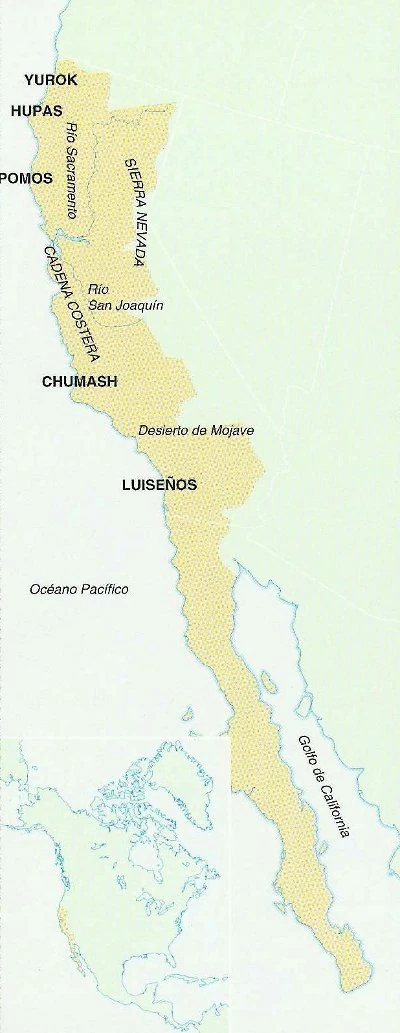


In the past, the Great Basin was a set of lakes surrounded by mountains and fed by the melting of glaciers from the last glacial period. However, after thousands of years of extremely hot summers, these ancient lake beds have turned into an arid rocky desert. Rivers flowing from the surrounding highlands flow into small alkaline lakes or simply get lost in the land.
Surviving in this dry and desolate region, with its vegetation composed of artemis, pine pines and enebros, has been a challenge. Small-sized hunting animals, such as squirrels, rats and Hares, which shelter among the rocks and feed on seeds, herbs and very little water, are abundant. As for deer and antelopes, they are scarce and rarely venture away from the shores of lakes and rivers, where they seek pasture. This homeless land has traditionally been home to hunting and gathering villages, such as the shoshona, ute and paiute.
In the more arid areas of the basin, communities spent most of the year moving around the desert in small family groups. Since no area produced enough food to sustain a sedentary life, there was no strong sense of territoriality. The houses were simple conical structures open at the top, built with rods or juncs and hunted and collected everything that the desert provided, from small hunting animals to pineapples and seeds, as well as insects and reptiles.
Because of food shortages, the shoshons and other groups in the arid areas followed the subtle rhythms of the desert to seize seasonal opportunities. In the spring, for example, terrestrial squirrels and marmots were still fat and slow after hibernation, making it easier to catch them. Thro the seasons, they hunted different animals and collected food, and in autumn they gathered to harvest pineapples and store them in pit for the winter. They also built corrals to catch antelopes and practiced rabbit hunting. This abundance of food was crucial to the winter survival and spiritual well-being of communities, which strengthened their tribal identity through shared ceremonies and activities.
In the utes region, where humidity was sufficient to support large hunting animals, such as alps and bison, and the paiutes of eastern Sierra Nevada watered meadows andined food reserves for longer.
However, the arrival of Europeans exerted a strong influence on the Great Basin and its inhabitants. The introduction of the horse around 1700 allowed the shoshons to expand into the plains and assimilate new traditions. When gold was discovered in California and western Nevada, the basin natives could not resist the advances of the white settlers, as they lacked warrior tradition and weapons to defend themselves. In 1863, the U.S. government took control of the region, and by 1874, most of the indigenous people had become either a wage labour force or were entirely dependent on the government.
 Native American Cultures: Myths and magic
Native American Cultures: Myths and magic
You can purchase this book on Amazon.
This book challenges deep-seated stereotypes and offers an enriching perspective that contributes to a more comprehensive and respectful appreciation of the indigenous peoples of North America. Through an understanding of their myths and beliefs, we are taking an important step toward cultural reconciliation and the recognition of the diversity that has enriched the history of this continent.
These mythical stories, many of them linked to the literary genre of fantasy, reveal a world where the divine and the human intertwine in narratives that explain the cosmic order, creation, and the fundamental structure of the universe. Discover how these sacred tales bear witness to the deep connection of the natives with nature and spirituality.
Native Americans: Population and Territories
Native Americans: Cultures, customs, worldview
Traditions, myths, stories and legends